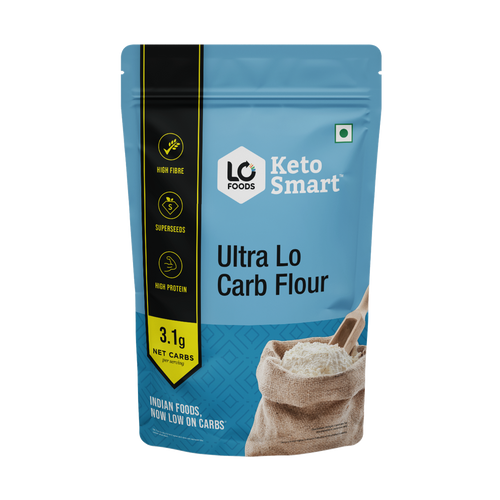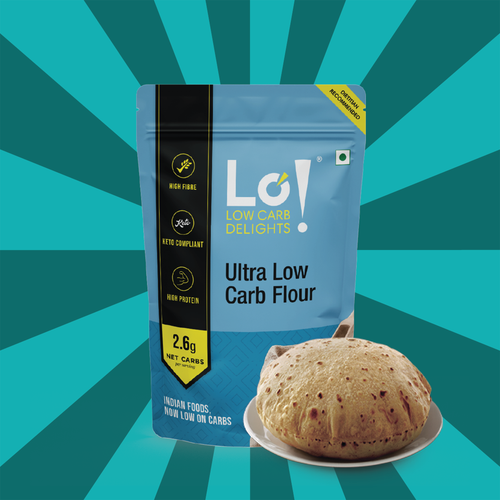
How to reduce carbohydrates in food?
Reducing carbohydrates in our diet is more than just a health trend; it's a conscious choice that can significantly impact our well-being. In a world where dietary choices play a pivotal role in our health, understanding the importance of trimming down on carbs becomes essential. Carbohydrates, while a primary energy source, can sometimes lead to health concerns if not consumed mindfully.
Adopting a diet with reduced carbohydrates has been linked to various health benefits, including weight management, improved blood sugar control, and enhanced energy levels. As we embark on this journey to a lower-carb lifestyle, it's crucial to address common concerns and misconceptions surrounding this dietary shift.
Many individuals worry that reducing carbohydrates might mean compromising on flavor or variety in meals. However, this need not be the case. By making informed choices and understanding alternative sources of nutrition, one can navigate towards a balanced and enjoyable low-carb lifestyle.
For those seeking a diet that aligns with their fitness goals or health conditions, the concept of reducing carbohydrates is particularly relevant. Whether you're aiming for weight loss, managing diabetes, or simply pursuing a healthier lifestyle, the role of carbohydrates in your daily nutrition is a key aspect to consider.
In this exploration of reducing carbohydrates in our diet, we'll explore the fundamentals, bust myths, and equip you with practical strategies to embrace a balanced and low-carb approach to eating. Let's embark on this journey together, where health-conscious choices meet delicious and satisfying meals.
Understanding Carbohydrates
Carbohydrates, often referred to as carbs, are a fundamental component of our diet, providing the body with a primary source of energy. To understand their impact, it's crucial to distinguish between two main types: simple carbohydrates and complex carbohydrates.
Simple carbohydrates consist of sugars, both natural (found in fruits and milk) and added sugars (in processed foods). They offer a quick energy boost but are often linked to rapid blood sugar spikes. On the other hand, complex carbohydrates, found in foods like whole grains, legumes, and vegetables, take longer to break down, providing a sustained release of energy and promoting a feeling of fullness.
The role of carbohydrates in our body is multifaceted. Beyond energy, they contribute to brain function and support the central nervous system. However, not all carbs are created equal. Opting for complex carbohydrates ensures a more sustained and balanced energy release, while excessive intake of simple carbs can lead to energy crashes and potential health issues.
When considering a low-carb lifestyle, it's essential to identify sources of healthy and unhealthy carbs. Whole grains, vegetables, and fruits are rich in beneficial carbohydrates, offering fiber, vitamins, and minerals. In contrast, sugary snacks, refined grains, and processed foods often contribute to excessive and less nutritious carb consumption.
Understanding the types of carbohydrates and their impact on health forms the foundation for making informed dietary choices. In the upcoming sections, we'll explore practical ways to distinguish between healthy and less beneficial carbs, empowering you to navigate your carbohydrate intake for optimal health and well-being.
Identifying High-Carb Foods
In the journey towards a lower-carb lifestyle, recognizing high-carb foods is essential, especially when navigating the diverse palette of an Indian diet. Let's explore into a concise list of commonly consumed high-carb foods in the Indian context.
- Rice: A staple in many Indian households, rice is a significant source of carbohydrates. Consider opting for healthier alternatives like brown rice or limiting portions.
- Chapati and Naan: While a traditional and delicious part of Indian cuisine, these bread varieties contribute to your daily carb intake. Choosing whole grain options can be a more nutritious alternative.
- Potatoes: Whether in curries or as aloo paratha, potatoes are rich in carbohydrates. Moderation and creative substitutions can help manage your carb intake.
- Sweets and Desserts: Traditional Indian sweets are often high in sugar and refined flour, making them rich in carbs. Exploring sugar-free or low-carb alternatives can be a mindful choice.
- Fruits: While fruits offer essential nutrients, they also contain natural sugars. Balance your fruit consumption and consider incorporating berries or other low-carb options.
Now, let's address the challenge of hidden carbohydrates in processed foods. Manufacturers often sneak in sugars and refined grains, complicating our efforts to reduce carb intake. To tackle this, scrutinize food labels for terms like sucrose, fructose, and maltose. Additionally, be wary of items labeled as 'low fat' or 'diet,' as they may compensate with added sugars.
Being vigilant about high-carb foods, particularly those prevalent in the Indian diet, empowers you to make informed choices. In the next section, we'll explore practical strategies to reduce carbohydrates without compromising on the rich flavors and variety that Indian cuisine offers.
Strategies for Reducing Carbohydrates
Embarking on a journey to reduce carbohydrates doesn't mean bidding farewell to the rich tapestry of flavors in our cultural cuisine. Let's explore practical and actionable strategies tailored to your preferences.
- Mindful Meal Planning: Start by planning your meals ahead. This not only helps in balancing nutrients but also allows you to make conscious decisions about your carb intake. Consider incorporating a variety of vegetables, lean proteins, and healthy fats into your meals.
- Embrace Low-Carb Alternatives: Swap traditional high-carb elements with healthier alternatives. For instance, cauliflower rice can replace regular rice, and almond flour or coconut flour can be used in place of refined flour in baking. These substitutions maintain the essence of the dish while reducing carb content.
- Include Protein-Rich Foods: Prioritize protein-rich foods like lean meats, eggs, and legumes. Protein not only keeps you fuller for longer but also aids in muscle maintenance and repair.
- Portion Control: Be mindful of portion sizes, especially with carb-heavy foods. Using smaller plates and bowls can create the illusion of a satisfying meal while keeping portions in check.
- Smart Cooking Methods: Opt for cooking methods that require less added fats and retain the nutritional value of ingredients. Grilling, steaming, and baking are excellent choices. These methods enhance the natural flavors without relying on excessive carbohydrates.
- Explore Low-Carb Snacks: Stock up on healthy, low-carb snacks to curb cravings. Nuts, seeds, and vegetable sticks with hummus are nutritious alternatives to traditional high-carb snacks.
Remember, the goal is not deprivation but rather making informed choices that align with your health objectives. By integrating these strategies into your daily routine, you can enjoy the vibrancy of your cultural cuisine while reducing your carbohydrate intake. In the next section, we'll conclude our exploration, summarizing the key elements to guide you on this fulfilling journey towards a balanced and low-carb lifestyle.
Important points
In conclusion, our exploration of reducing carbohydrates in our diet unveils a path towards a healthier and more balanced lifestyle. As we wrap up, let's recap the key takeaways to guide you on this journey:
- Understanding Carb Types: Distinguish between simple and complex carbohydrates, recognizing the impact they have on energy levels and overall health. Opt for nutrient-dense complex carbs to support sustained energy release.
- Identifying High-Carb Foods: Be mindful of staples in the Indian diet that are rich in carbohydrates. From rice to desserts, understanding the carb content of your favorite foods empowers you to make conscious choices.
- Practical Strategies: Adopt actionable strategies like meal planning, embracing low-carb alternatives, and incorporating protein-rich foods. Portion control and smart cooking methods play pivotal roles in maintaining a balanced approach to carbohydrate consumption.
- Cultural Considerations: Tailor your approach to reducing carbs based on your cultural preferences. Enjoy the diverse and flavorful aspects of your cuisine while making smart substitutions that align with your health goals.
- Balanced Enjoyment: The key lies in balance. Rather than viewing reducing carbohydrates as a restrictive measure, consider it a way to enhance your overall well-being. Embrace a diet that is not only nutritious but also enjoyable.
Remember, the journey to a low-carb lifestyle is about making informed choices that suit your individual needs and preferences. It's not a one-size-fits-all approach, but rather a personalized and sustainable commitment to health. As you navigate this path, savor the richness of your cultural cuisine, savoring every bite with the knowledge that you're nurturing your body and well-being. Here's to a delicious, nutritious, and fulfilling journey ahead!
This Blog post is an initiative by Lo Foods, to provide accurate and Nutritionist / Doctor approved information related to Health. Lo Foods is India's leading brand for Everyday Functional Foods. Foods designed for specific Health conditions or Needs. Lo Foods also runs India's largest range of Low Carb Healthy Cloud Kitchens, under the brand names of Lo!, ProteinChef, ATH (All Things Healthy) and DiabeSmart.















Leave a comment
Your email address will not be published.